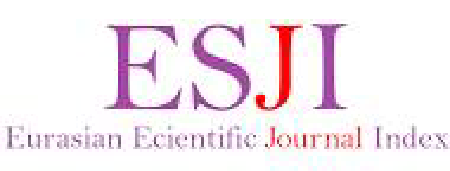EDGE OF EMPIRES: TRANS-REGIONAL KNIFE-MAKING NETWORKS FROM THE SILK ROADS TO THE PRESENT
Abstract
This article reconstructs how knife designs, steels, and workshop techniques moved across Central Asia from the medieval Silk Roads into the present, using the Uzbek pichoq/pchak tradition as a focal case. I treat knives as “knowledge objects” whose blade alloys, motifs, and maker’s marks encode trade ties and shifts in political economy. Evidence triangulates object study, documentary sources, and contemporary programs: (1) archaeo-metallurgical and materials scholarship to situate steel technologies and object mobility; (2) museum collections and historical records that anchor cross-regional flows; and (3) present-day craft institutions, fairs, and policy tools (notably the new Uzbek framework for geographical indications and the registration of “Chust pichog‘i”). Findings show a long-run network in which nodes (Chust/Andijan, Bukhara–Samarkand, Kashgar, Mashhad, Tabriz) waxed and waned with imperial and Soviet realignments, while design lineages persisted and re-surged after 1991. I argue that heritage craft acts as soft infrastructure: a repeatable, trust-building channel that supports contemporary cultural diplomacy and trade, evidenced by museum partnerships, joint exhibitions, and measurable tourism and export effects. The conclusion offers a replicable method for mapping craft networks (GIS + typology + interviews) and a policy playbook for heritage-led regional cooperation under the Silk Roads framework.
References
• Pryce, T. O. (2024). Archaeometallurgical networks along the Southwest Silk Road. Cambridge Archaeological Journal.
• Berger, D., et al. (2023). Bronze artefacts, chemistry and isotopes in Central Asia. Frontiers in Earth Science.
• Grazzi, F., et al. (2018). Neutron tomography/diffraction of Indian & Central Asian blades. Radiation Physics and Chemistry.
• UNESCO Silk Roads Program—Uzbekistan country page.
• State Hermitage Museum record: Sabre with scabbard presented by the Khan of Kokand.
• Uzbekistan Law on Geographical Indications (entered into force March 3, 2022).
• UZA (National News Agency): “Chust pichog‘i” registered by the Ministry of Justice.
• Uzbekistan.travel: “Knives-making art” (official tourism knowledge page).
• Society.uz exhibition note: “At the Cutting Edge of Tradition.”






















